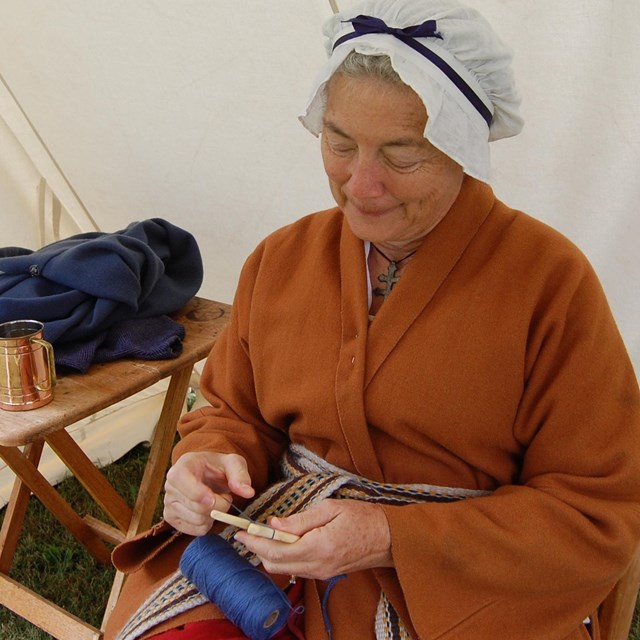Swear Allegiance or Die?
In the fall of 1780, during the Revolutionary War, the American fight for independence was going badly. British Major Patrick Ferguson demanded allegiance to the King of England from the people living in the Carolina backcountry and the Appalachians. Referred to as the Overmountain area, these settlements were west of, or "over" the Appalachian Mountains. At that time, this was the boundary dividing the thirteen American colonies from the western frontier. The Overmountain area included parts of North Carolina, Virginia, and what is now Tennessee.
The Overmountain Men were originally reluctant to pick up arms for the Patriot cause. But when British Major Ferguson threatened to bring his army across the mountain to "hang their leaders, and lay waste to the land with fire and sword" if they did not swear allegiance to the King, the Overmountain Men were outraged.
They decided to organize an attack against Major Ferguson. Troops were gathered in Sycamore Shoals, Tennessee, an outpost on the Watauga River, near present day Elizabethton, Tennessee. They then rode to the mountains of North Carolina.
On the evening of September 28th, nearly 1,000 rifle-armed, mounted militiamen reached the fields along Grassy Creek, North Carolina. These Overmountain soldiers were under the command of Colonel Isaac Shelby, Colonel John Sevier, Colonel William Campbell and Colonel Charles McDowell. They had completed a hard 20-mile ride that day from the top of snow-covered Yellow Mountain, following Bright’s Trace along the North Toe River to the mouth of Grassy Creek, near the modern-day town of Spruce Pine, North Carolina.
At Grassy Creek, they found an excellent place to make camp with plenty of fresh water available for the men and their horses. Over their campfires, they prepared a simple meal of parched corn and finished off the last of their beef rations. The next morning the officers formed their men up, ordered them to mount their horses, and rode out of camp.
Half the men rode with Colonel Campbell across the Blue Ridge through Gillespie and Lynn Gaps into Turkey Cove to seek out intelligence from suspected Loyalist Henry Gillespie. They crossed the crest of the Blue Ridge Mountains near the town of Spruce Pine, North Carolina. On the night of September 29, they camped near the present-day site of the Museum of North Carolina Minerals (Milepost 331) on the Blue Ridge Parkway.
The other half of the men, under Colonel Shelby and Colonel Sevier, returned to the North Toe River and followed Roses Creek to Hefner Gap, where they crossed the Blue Ridge and descended into North Cove.
The battle between Major Ferguson's British troops and the Overmountain Men took place on October 7, 1780 at King’s Mountain, South Carolina. The Overmountain Men used silence and stealth as they ascended the ridge of King’s Mountain to surprise the enemy. The battle lasted only an hour. Afterwards, over 200 British soldiers lay dead, including Major Ferguson. Another 160 were wounded and roughly 700 prisoners had been taken.
The crucial Patriot victory at the Battle of King’s Mountain turned the tide of the Revolutionary War and the set nation on the road to independence.
Today, stretching 330 miles through four states (Virginia, Tennessee, North and South Carolina) the Overmountain Victory National Historic Trail traces the route used by patriot militia during the pivotal Kings Mountain campaign of 1780. Follow the campaign on a commemorative motor route over highways marked with the distinctive trail logo or explore history by traversing 87 miles of walkable pathways. Learn more about the Overmountain Victory Trail at: https://www.nps.gov/ovvi




